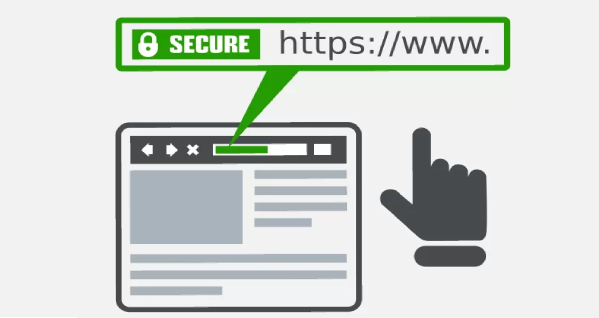7 Proven Tips for How to Make Sure a Site is Secure
A safe website keeps the potential to boost up your business and encourages the customers to spend on your site. If you are looking for a solution on how to secure a website for free, you have landed on the right page. Using an HTTPS and SSL Certificate is the easiest way to ensure a secure site. But there are few other things you can do to prevent attackers and malware from compromising the website.
Let’s read for the best seven tips on how do I make sure my website is secure from cybercriminals.

1. Keep Your Website Updated
If you are not updating your website’s software and security, you are allowing intruders and malicious content to intrude into your site. As soon as you get the notification about the update, you should immediately update it and block your doors for attackers and malware. You should also keep your website’s certificates up to date, to prevent malware. With this, updates certificates make sure to show up your website in search engines continuously.
2. Make Users Prohibited from Uploading Files
By preventing users from uploading files, you can cover one step to a secure website. When you allow visitors to upload any file on your website, it automatically becomes a security vulnerability. You can remove forms from other areas where a user can upload a file.
You can also fix this problem by allowing users to upload the specific type of files like a JPG for pictures, an mp3, etc. if you are handling a website which relies on a webpage for forms like cover letter submissions. You can add an option of contact in your website and ask your visitors to mail you the things instead of uploading on the site.
3. Hide your Admin Folders
Most of the website handlers name their folders of sensitive files of the website like Admin, Root, etc. This method not only acts as a convenient way to access the data of a website for a handler but also for an attacker.
You should change the name of the location of these files dully and casually like ‘New Folder (1) or ‘History’. It will be challenging to locate the sensitive data of your website for a would-be cybercriminal.
4. Store Passwords in Hashed Format
You should always store your user passwords in a hashed format. This is a common error among new website owners who usually keep their passwords in plain text format. It is an easy way to steal your passwords once the hacker locates your files. The cybercriminals have attacked prolific websites by using this error. For Example, Twitter has been guilty of this error in the past.
5. Keep Error Messages Plain
If your error messages are providing enough information to attackers and malware can, they can exploit the data. Through this exploitation, they can identify and gain access to the root directory of your website. You should avoid adding elaborated information to your site error messages. Instead of it, you should offer a concise apology and link back to the main site.
6. Install a Secure Sockets Layer Certificate

An SSL certificate is proof of a secure website. It comes with a message that the site can transfer data in encryption form between the server and the user’s browser. Generally, you have to pay yearly for an SSL certificate to maintain the security of a website.
Some providers on the internet also offer you a free service known as Let’s Encrypt, which will also provide you with an SSL certificate. You will come across three options while making the selection of an SSL Certificate that are domain, business and extended validation. Business validation and Extended Validation are required by Google to receive the secure bar ahead of your site URL.
7. Apply HTTPS Encryption
Once you are done with the installation of the SSL Certificate, your site will be qualified for HTTPS encryption. You can easily enable this encryption by installing SSL to your website’s certificates section. You don’t have to worry about your WordPress or Weebly websites as they already come with HTTPS encryption. This certificate should be renewed every year.
The Bottom Line
A secure website can draw more customers rather than a website which is vulnerable to threats. With this, the responsibility of keeping the data safe of your user lies on you as they enter their details on your website like credit or debit card number, etc. Sometimes, several websites sell user’s information to a third party, which is illegal and unethical. Now, you have an idea for the query "how do i make sure my website is secure". If you are wondering how to secure an html website, then by following the seven methods mentioned above you can secure it too.
© 2026 Comodo Security Solutions, Inc





